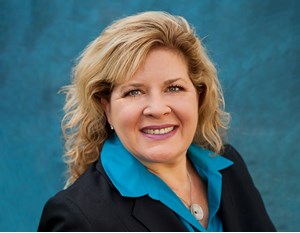According to Gleanster, only 25% of your marketing leads are prepared to buy. About 50% of leads enter a sales funnel undecided. That leaves a noteworthy 50% of leads that are dropped or go cold. Improving how you nurture leads and how to streamline that process can help you achieve more conversions and see greater returns on your marketing dollars. First step: optimize your first contact Making the most of your first contact with a lead is crucial to nurturing that relationship and prompting the conversion. At the widest part of the sales funnel, you’re putting in the legwork of lead generation. Your brand is making an impression on prospects via ads, listings, and other marketing initiatives. Towards the middle of the funnel, your prospects are showing interest. They’re responding to your marketing strategy. Perhaps they’ve filled out a contact card or visited the property. That first contact is essential. Use robust customer relationship management (CRM) software to store prospect contact information. In addition to traditional data such as phone and email, also request social media handles. Even if you don’t “friend” each prospect, you gain a better insight on their preferred platform for social media marketing. It is equally important to record lead attribution. That’s how the prospect found you such as the social media platform, website, or ad that convinced them to make contact. Getting this information will help you identify the highest quality lead sources and focus your future marketing dollars accordingly. Learn how to optimize multi-source lead attribution. Be sure that you’re entering prospect data into a CRM system that integrates with your property management software. This step improves efficiency by eliminating multiple points of data entry for the same prospect. It also decreases the likelihood of duplicate entries and...
Let Pets Pay Off
How and What to Market for Success
The future is furry. According to the American Pet Products Association (APPA), 65 percent of Americans have pets. The number of households with pets is growing. Since 2014, the number of people who own pets has increased by 3 percent. Many of these households include your prospects and renters. Another major housing trends report from 2018 reveals that 46 percent of renters live with pets. Multifamily properties that adequately market their pet policies and services can thrive in this environment. What Renters Want About 47 percent of renters list allowing pets as a requirement for their next rental, reports the 2020 NMHC and Kingsley Apartment Resident Preferences Survey. Simply permitting pets isn’t enough. Nearly 45 percent of respondents expressed interest in on-site pet services. Pet services make caring for an animal in an apartment setting more convenient. In the absence of a personal yard, more than 50 percent of renters expressed interest in a dog park and 44 percent desired a pet-washing station. Those are just a few services that pique renters’ interest in the NMHC report. Other options include dog walking, pet-friendly community events, and animal health and safety activities. When properties offer value-add services for pets, pet owners report a greater sense of satisfaction with the community. That satisfaction can translate directly into conversions and lease renewals. Marketing that Gets Results Establishing your pet policy and an engaging selection of in-demand pet services are the first steps towards success. The next step makes sure that your hard work draws the cash flow that it deserves. Without advanced online marketing, prospects who would value your pet-friendly efforts may not find you. It’s important to intercept prospects at multiple points during their housing search. By reaching prospects are various touchpoints around the web, you can...
A Sense of Community
Improving Renter Morale
Savvy property managers understand that a feeling of belonging created in a community of neighbors is priceless—especially for long-time renters—and can generate numerous benefits for residents and the property alike. From creating an inclusive living environment for everyone to improving retention, there are many positive aspects to be gained from one simple concept: a sense of community. But, how can you build a community from scratch, and incorporate new residents along the way? Observe the little things A strong community is easy to spot. People smile more, neighbors greet each other and are more open. This often reflects the way the premises are kept: the shared space is clean, and residents are more inclined to clean up after themselves or pick up litter to keep things orderly. Conversely, if people don’t seem to spend time in common areas, and there is visible trash or property damage, it could be a sign that the community needs some TLC. Get a different (social) perspective The secret to a low renter turnover has an emotional dimension. Creating bonds and fostering a sense of camaraderie between renters and property management—as well as among renters themselves—is often overlooked. It all boils down to promoting the social side of the apartment community instead of seeing just the business side. Seeing your property as more than just a physical space is a good start to put yourself in the renter’s shoes and understand why a sense of belonging weighs so heavily for many people. Always remember to ask for feedback and act on it accordingly. Keep in touch digitally Bulletin boards and community fliers are fine, but today’s renters need more than that to feel welcomed and wanted in a community. The answer to creating easy community engagement is simple: go...
Is Bigger Better?
Larger Apartments Buildings Cause Debates
Units are getting smaller as apartment buildings grow larger for the first time in history. Interestingly, these large buildings are indicative of the nation’s troubled relationship with rental housing Characteristics of New Housing Report Bloomberg reports that developers completed 211,000 new housing units in about 2,000 buildings with 50 or more units. That’s the largest boom on record since the late 1960s when the survey began. Bloomberg sourced its data from the Characteristics of New Housing report issued by the Census Bureau in partnership with the U.S. Department of Housing and Urban Development. For nearly 50 years, firms focused on developments with 50 or fewer units. As land prices rise, footprints are growing smaller. Apartments are also getting smaller. In 2018, the median size of multifamily units built for rent was 1,081 square feet. That’s 500 square feet smaller than units constructed in 2008. Why Bigger Isn’t Better Smaller buildings have not fallen out of favor with consumers. Rather, the shift towards fewer but larger apartment buildings is indicative of dysfunction in the industry, hypothesizes Justin Fox, financial journalist with Bloomberg Opinion. “Growing regulatory burdens, rising construction costs, and the increasing role of large institutional investors in housing-development finance have tipped the scales in favor of big projects,” he said. He continues, “zoning rules and opposition from would-be neighbors in residential areas have left urban and suburban commercial districts and exurban greenfields as about the only locales open to new housing.” The fallout: neighborhoods are welcoming a few large-scale new developments or no developments at all. Finding Ground for the Middle Ground Mid-sized developments don’t have ground to stand on. Barriers to construction have stifled the growth of multifamily construction overall. Small and mid-sized projects were the first to take the axe. In short,...
Intentional Retention...
Personalizing Your Community
As a property management software provider with tons of solutions at hand, we’re proud to say that there are few property issues that technology can’t address. While tech is a terrific way to enhance the renter experience, zeros and ones have their limits. Some important components of community building require the human touch. Your ability to personalize the community experience links directly to resident retention and a healthy bottom line. Yardi client Pegasus Residential demonstrates how to personalize a memorable property experience to promote retention and drive revenue. It Starts with Your Reputation A smooth user experience, great photos and easy leasing options are a necessity in today’s online marketplace. But poor reviews and a bad reputation will quickly defeat your best efforts. Online reviews and reputation “will make or break a community and single-handedly increase traffic and occupancy,” says Wendy Dorchester, Pegasus Residential’s vice president of operations. Reputation management is an essential part of your community’s success. There are services to manage online reviews. Your in-house team can catch resident concerns before they make it online. They can also influence your reputation in the offline community. Encourage attentiveness and responsiveness amongst your leasing team, advises Dorchester. Online surveys are another good way to intercept concerns before they make it online or into the rumor mill. Build Up Your Image According to online technology news source TechCrunch, more than 90 percent of apartment hunters begin their search online. Few sign a sight-unseen rider, which means most will visit your property before committing to the lease. Curb appeal and staff representation matter. Stay on top of landscaping and building maintenance. “A community’s curb appeal is critical, too, as a prospective resident’s first impression of a community upon visiting has a huge impact,” says Dorchester. She...
Yardi Matrix
Looks at NY Rent Control
Affordable housing advocates hail New York state’s Housing Stability and Tenant Protection Act of 2019 as a life raft for renters in more than 1 million apartments in New York City alone. Other observers, however, regard it as a minefield that will eliminate incentives for building upkeep, remove housing stock from the market, and drive away landlords and investors. A key provision of the law empowers a board to tie rent increases to an inflation-indexed percentage. Owners previously could raise rents 20% when stabilized units were vacated, with deregulation allowed when rent level or resident income thresholds were reached. Another section limits rent increases to cover only $15,000 of improvements over a 15-year period, regardless of actual costs. “New York State has taken a historic step towards a fairer housing system by reforming the rent loopholes that allowed landlords and property owners to harass and displace tenants across the State. By passing this legislation, we are finally delivering equity and justice to our clients and all low-income New Yorkers,” the Legal Aid Society said in a statement. “[The law] makes it likely that no new apartment buildings will rise. It guarantees that existing ones will decay. It will make repairs and upgrades prohibitively expensive for landlords who must eke out puny profits from properties that require major reinvestment, but where they can’t charge enough rent to pay for it,” countered New York Post editorial writer Steve Cuozzo. In July, a month after Gov. Andrew Cuomo signed the bill into law, a coalition of trade associations and building owners filed a federal lawsuit alleging that the legislation is unconstitutional. A new Yardi Matrix bulletin weighs in on the new law. “Market players say that the values of properties with stabilized units dropped anywhere between 20-40...
Security Deposit Alternatives
Three Reasons They Attract Renters
Are your security deposit requirements costing you good renters? Sometimes, desirable renters are short on cash. But, do you really want to risk losing a good and potentially long-term resident because they can’t pay a high security deposit before they move in? Imagine you show a unit to a young professional who is relocating to your area. They have a good new job and great credit along with excellent references. They’re the kind of reliable resident you’re looking for — and they’re ready to sign a lease. But, they don’t have enough cash to pay the security deposit you require. Do you have to let them walk away? As it turns out, you don’t. You can let good renters move in for less money up front by allowing them to post surety bonds in place of a traditional cash deposit — and still ensure your properties are protected. Read on to learn more. What is a Surety Bond? Surety bonds are a form of insurance that constitute a contractual promise to meet security deposit requirements while taking less money up front from new renters. Renters simply pay a one-time, non-refundable bond premium that is typically less than 20% of a traditional security deposit, and the surety bond provider acts as a third-party guarantor up to the limits of the bond amount. While relatively rare before the mortgage crisis of 2008-2010 when many families experienced job losses and home foreclosures and needed help getting into rentals, surety bonds have become more popular with landlords in recent years to help renters deal with move-in costs. What are the Benefits? While renters are happy to keep more hard-earned money in their pockets and not worry about getting security deposits refunded, property staff are relieved of managing escrow accounts and processing deposit refunds — which also means saving banking fees and administrative costs. Many property managers also find that offering a deposit alternative gives them an advantage in competitive rental markets. Three Great Reasons to Accept Surety Bonds Gain a competitive advantage and fill vacancies faster: Without the barrier of a big security deposit, surety bonds can help you rent available units faster. Plus, accepting surety bonds as a deposit alternative for qualified renters could help you market your properties, especially in competitive areas. Take the burden off management and mitigate risk: With surety bonds, property owners and managers are removed from the collection process and, in most cases, from litigation should disputes arise over the return of security deposits. Reduce work for property staff and lower administrative costs: Opening separate trustee or escrow accounts with your bank for new tenants can be a hassle and takes hours of your staff’s time to process, in addition to monthly bank fees that eat away at your deposits over time. Surety bonds don’t require any of that, nor do property staff need to track and pay out interest on security deposits. Ready to give your renters an affordable move-in option that also helps your busy staff and protects your bottom line? Download a free brochure to get...
Resident Retention
7 Tips to Keep Renters
Resident retention plays a major role in easy lease renewals and favorable reviews. Maintaining existing leases also cuts costs: no turning units, new marketing campaigns or strategies to covert new prospects. Doesn’t that sound awesome? The following seven strategies for resident retention can help you make the most of existing relationships. Begin at move-in. A positive move-in experience is a key factor in renter retention. Welcome packages are an easy way to help residents feel at home. Depending on your brand, you may choose to spoil your residents with wine, decadent treats, and certificates to fine local restaurants. Perhaps you go for thoughtful and practical like light bulbs, toilet paper, and instant coffee. Either way, the gestures leave a positive impression with residents. Be proactive! A survey by J Turner research reveals that maintenance issues top residents’ lists of complaints. Staying on top of maintenance requests promotes resident satisfaction. Preventative measures, such as regular spring cleaning and winter maintenance, also keep dissatisfaction at a minimum. Respond quickly and professionally to negative feedback. Negative reviews and feedback are inevitable. Your staff must respond quickly and professionally to resident feedback to keep bad situations from getting worst. With the right perspective, even negative feedback can be transformed into an opportunity to shine! Encourage resident engagement with the property and staff. Create opportunities for residents to have positive interactions with staff members and the property itself. Is your property’s demonstration kitchen collecting dust? Is your community garden suffocating under weeds? Highlight the site’s marketable features through events and activities. Remind residents why they moved in! Don’t forget to leverage staff creativity. Encourage your social media person to offer smartphone photography classes. Got a craft beer snob working in your office? Let them coordinate a bar hop for...
Originations Wane
Market Analysis
Editor’s note: Paul Fiorilla is director of research for Yardi Matrix. His analysis of waning loan originations, despite high demand for apartments and industrial real estate, was recently published by Globe Street. You can find the full report summary available for download here. (Select the national category.) Concerns about rising interest rates and weakening economic growth have led to a slowdown in commercial mortgage originations, particularly in out-of-favor asset types, despite the wide availability of debt capital. The Mortgage Bankers Association reported that commercial mortgage originations in 3Q18 fell 7 percent from the same quarter a year ago. The biggest drop came from CMBS, which fell 53 percent year-over-year, and commercial banks, which originated 22 percent less than a year ago, according to the MBA’s survey. Life companies and the GSE multifamily lenders posted slight increases in lending. The decline in lending is more a reflection of demand than supply. No major source of debt capital is pulling back, and the number of debt opportunity funds is on the rise. However, property sales have dipped about 10 percent nationally, while rising interest rates are discouraging some borrowers from refinancing. Since bottoming at just over 2.0 percent in September 2017, the 10-year Treasury has increased steadily and has been over 3.0 percent since mid-September. That has increased loan coupons, although loan spreads have generally come down 40 to 50 basis points over the past year, so the cost of borrowing has not risen as much as interest rates. Tightening loan spreads reflect the healthy appetite among lenders to book loans. Another headwind to originations is the decline in property sales as buyers start to pull back. Sellers are getting fewer bids and – while acquisition yields aren’t yet climbing appreciably – buyers are seeking to...
Pets & Service Animals
Management Tips
Permitting animals on your property can help residents feel comforted, capable, and safe. Managing the quantity and purpose of those animals—pets and working animals–has become a hot topic in property management. These four tips may help to standardize and simplify animal management at your site. Understanding the Laws To best accommodate residents with disabilities and their working animals, achieve a basic understanding of the laws that are in place: The Fair Housing Act (FHA) and Section 504 of the Rehabilitation Act of 1973 (Section 504) require housing providers to make reasonable accommodations for people with disabilities. The Americans with Disabilities Act (ADA) promotes accessibility in public spaces. Together, the three laws promote inclusion and safety for those living with disabilities. Both FHA and Section 504 use the term “assistance animal” to describe working animals that provide aid for humans. The ADA refers to “service animals” with the same purpose. The three laws require that housing providers and the managers of public spaces welcome working animals and their owners. Other details of the laws that are worth noting include: -It doesn’t matter if a resident refers to an “assistance animal” or a “service animal.” FHA and Section 504 apply to all animals that assist or perform tasks for the wellbeing of a resident with disabilities. -The laws do not limit the number of assistance animals or service animals a person may have. It is lawful for a person to have multiple pets, each to address a different therapeutic function. -None of the laws require a specific certification or training for the working animal. Required Documentation Establish a documentation policy that’s fair for all prospects with service animals. Implement the policy for apparent and invisible disabilities. The prospect may be asked to provide documentation regarding their need for a service animal or assistance animal. HUD entitles leasing staff to request documentation from a reputable third party who is familiar with the applicant’s condition. Applying Designations for Pets and Working Animals When documenting the animals within a unit, it may be helpful to differentiate between working animals and pets. Residents with service animals or assistance animals may require different accommodations than traditional pet owners. For example, some communities have a limit on the number of pets within a home. A resident with disabilities reserves the right to have multiple animals that assist in different ways. May this resident also have a pet (non-working animal)? Establish a policy and apply it consistently. Helpful Software Business management software may help organize residents and their animal companions. Yardi client Bridge Property Management has customized the set-up of Orion Business Intelligence to keep track of animals on the premises. Yardi product specialist Colin Roberson explains, “We have been able to track how many dogs are on each property, which units have pets. [Orion BI] is a nice thing that the property managers can have on their phone. If they are walking the property and seeing a pet in a unit, they can very quickly verify to see if we have a pet on record there.” “It’s such a practical application,” Roberson continues. “I don’t know if others use it that way but I would say we use it in different ways to track things like that and improve...
No Smoking Units
See How NALS Did It
Transitioning one property to a nonsmoking policy can be a challenge. But 49 properties? That’s no small feat. NALS Apartment Homes recently undertook this task, using the communication tools in RentCafe to help smooth the process. Keep reading to learn more about NALS’ decision to roll out a nonsmoking policy, the three-phase approached it used and the effect the shift has had on marketing, leasing and retention. Why Transition to a Nonsmoking Portfolio NALS began exploring options to reduce and/or eliminate smoking across its portfolio in 2015. After polling residents and staff, researching local laws and engaging with local chapters of the American Lung Association, it was determined that most properties would adopt a nonsmoking policy. According to the NALS 2017 Annual Report, “While the negative health effects of smoking influenced our decision, we were also motivated to mitigate the increased costs of cleaning a smoking apartment, the increased risk of fire caused by smokers and the disturbance that smoking causes to nonsmoking resident and employees.” Policy Change in Three Parts NALS approached the transition to nonsmoking gradually, to allow time for clear communication and minimize the impact on residents. “RentCafe was a huge help in making our nonsmoking policy a success,” shared Kayla Campbell, marketing leader at NALS. “We used RENTCafé to send out the initial surveys, and then to streamline what was communicated about the policy in our marketing, online applications and email correspondence. We also used the calendar and announcement functions in the resident portals to ensure the transition date was top-of-mind.” Phase 1 (2015): Surveys NALS sent out surveys to gauge interest at the properties, determine primary resident questions/concerns to address and to see which specific buildings were already effectively nonsmoking. Phase 2 (2016): Notice of Intentions A notice of...
Demand Information
Matrix Multifamily Report
A new report by Yardi Matrix indicates that multifamily deliveries might outpace demand in some key U.S. housing markets. Matrix conducted a study to determine which areas might be at risk of oversupply or undersupply over the next five years. The research revealed that deliveries in 2016 and 2017 helped compensate for the construction shortage in the wake of the Great Recession. “Most of the metros that are at short-term risk of oversupply have strong economies and healthy multifamily demand, so units coming online should be absorbed by growing populations,” the report concludes. Markets and submarkets with outsize development activity, however, “can expect volatility” that will give rise to higher vacancy rates and stagnant rent growth. Achieving market equilibrium going forward will require developers to “intelligently calibrate the amount and location of new projects” to accommodate finite demand. Yardi Matrix identified Denver, Seattle, Dallas, Phoenix, Miami and Charlotte, N.C., as key markets at risk of oversupply over the next five years. Demand is projected to exceed supply of apartments for rent in San Diego, Los Angeles, California’s Inland Empire, Houston, New York and Sacramento, Calif. Read “U.S. Multifamily Supply and Demand Forecasts by Metro” to learn more about homeownership, population shifts, social trends and other factors affecting the multifamily...
Easy Virtual Leasing
6 Tips for Success
There are several reasons why a client may not be able to tour the property in person. Our increasingly mobile and digital industry makes remote tours an excellent alternative, yet it also requires that agents are ready to sell to a client, sight unseen. The six tips below can make selling to remote clients easier and faster than ever. Master the Basics By now, you know that your website must have a virtual tour—or virtual reality tour—along with detailed a floor plan and a description of the condo. Make sure that all information is up-to-date. Even minor changes to appliances or fixtures may matter to a remote client. If any of those essential features are missing, get the tools you need for a better website. Request Client’s Must-Haves In Writing Let’s face it: you’re busy. A written list of your client’s must-haves, desires, and deal breakers is a cheat sheet for you. But most importantly, having a concrete list means that the remote buyer has a clear understanding of what he wants. This list will expedite the condo hunting process, especially if he can choose between several similar unit styles. FaceTime, Skype, or Zoom Tours with Clients The virtual tour on your website is the first step. A live video tour, however, gives the client greater control over what they see and how they see it. It’s like he gets to walk through the home himself. That greater control over the details will help the client feel more comfortable with the unit and ready to seal the deal. Send Listings with All the Local Details If your client has already said the school system, crime rate, or walkability score are important to her, why not email those details with the listings? Presenting a complete...
Pet-Friendly, Plus
Value-Add Services Pay Off
Welcoming pets onto your property was your first step in the right direction. Nearly 70 percent of U.S. households own a pet, reports the 2017-2018 National Pet Owners Survey. Pet-friendly apartments appeal to a broader spectrum of households. But don’t stop there! Several properties in your area are also pet friendly. What makes you different? Outshine Your Competitors The pet-centric, value-add services below can help you stand out in prospects’ minds. For your existing residents, the services encourage compliance with property regulations. When residents develop a relationship with the property staff and other pet owners, it improves the likelihood that the resident will care about the pet community at the property. 4 Fun Value-Add Ideas The best value-add ideas are beneficial for your property and its residents. Small investments in communal spaces go a long way towards a tidy property and happy pet owners. Include pet waste disposal bags and trash can stations throughout your property’s walking trails and dog park. Water bowls and treats at the dog park also make a nice addition. Local discount programs are a terrific way to showcase the conveniences of your neighborhood. Simultaneously, you’re offering incentives to prospects and residents. Negotiate discounts or loyalty rewards opportunities with nearby veterinarians, groomers, pet sitters and walkers. Promote pet daycare services like Wag, Rover, and local boarding businesses. When pets are given supervised breaks to play and potty, they’re less likely to damage the unit they live in. Promoting daycare services is free for you and cuts costs for your property. Make your pet community a selling point by using RentCafe SMS messaging, email, blog, and social media. This is a great way to market your pet-focused events such as adoption events, walking groups, pet hack workshops, volunteer opportunities, and more. What...
Apartment Jobs
Snapshot from NAAEI
The National Apartment Association Education Institute (NAAEI) now issues monthly reports called the Apartment Jobs Snapshot. The report includes an overview of the job market as well as a special highlight for a key position within the industry. Creating the Report The report addresses concerns faced by NAA members for years: a lack of comprehensive employment data and a shortage of accessible resources on our industry. Paula Munger, Director, Industry Research and Analysis explains, “We hear often from our members how challenging it is to attract, recruit and retain talent in this very competitive environment. There is a shortage of labor in the apartment industry as it continues growing in this cycle. As the Snapshot evolves over time, it can be used as a benchmarking tool based on location, job title, salary, time to fill and any number of other variables.” Rather than presenting a white paper, the NAAEI report features engaging infographics that are colorful, informative, and concise. “Since it’s basically real-time data, the goal is to release it as soon as we can at the close of every month,” says Munger. “We wanted a very easy-to-digest, quick ‘snapshot’ of the current apartment job market.” First Edition Higlights The first report, issued in February, shows over 4,600 jobs are available in the nation’s apartment industry. That’s an 18 percent increase in job postings over the previous month. Demand increased across the board but particularly for maintenance supervisors. There are more than 580 job listings for maintenance supervisors spread across the United States. Next in demand came leasing consultants with more than 530 job postings. Some cities carry the bulk of job demand. Denver leads the percent of total real estate jobs in top metros with a staggering 48 percent. Denver is followed by...
Blogging 101: Part 4
3 To-Dos Before Publishing
Once you add great media to your blog post, you’re almost ready to hit publish! There are three tidbits that will help readers find your blog post and bring greater return on your investment. Add Categories and Tags Categories and tags are primarily used to organize your content and make it easier for readers to find what they’re looking for. These keywords are also used to help search engines identify what your content is about. This makes it easier for your blog post to appear appropriately in search queries. Let’s continue with the nursery safety blog example from our previous posts. In that instance, category may be “apartment safety” and tags may include “childproofing your apartment,” “baby proofing your apartment” or “nursery.” SEO Plugin If you are working on a blogging platform that permits plugins like WordPress, an SEO plugin may be a worthwhile investment. It goes beyond the functionalities of Categories and Tags to help search engines “crawl” through your content. (That’s a nerd term for quickly scanning the content to identify its purpose and help it appear appropriately during internet searches.) The SEO plugin may ask you to identify keywords. Long-tail keywords are best here. “How to create a safe nursery” will be more beneficial than just “nursery,” for example. The plugin may also request a description. This is a brief summary of your blog post that may appear as an excerpt under your link and blog post title in a query listing. Keep the description to 2-3 sentences. Social Media Plugin Depending on the flexibility of your platform, you may also be able to add a social media plugin. The best of these plugins allow you to create custom posts for social media. You can add hashtags and use the format...
Simplified Screening
ScreeningWorks Pro Delivers
Screening applicants manually and using paper reports that require further research slows your staff down — and can cost you your best prospects and valuable leases. Here’s some good news: replacing a paper-based process for qualifying applicants and converting them to residents is easier than you might think. Clients already know that approving quality residents as part of their automated leasing workflow with ScreeningWorks Pro saves time and money. The system includes advanced functionality to help clients not only easily select low risk residents who improve their bottom line, but also get more detailed analytics about individual applicants, local area renters and overall property performance that aids in decision making for the entire organization. Scoring for leasing wins Landmark Realty Controller Larry Busgeon said that one of his favorite features of ScreeningWorks Pro is the ability to select unique screening criteria for every property type in Landmark’s nationwide portfolio. “Our Albuquerque properties are lower end so we’re not worried so much about credit score as we are history of tenancy, For San Francisco, of course we want (strong) credit scores because the rents are much higher there, and we want to see some history on that credit score,” Busgeon explained. Landmark also has a mixed portfolio of apartments in Kansas City, Mo., a market that presents its own set of challenges. Using the most reliable data available, ScreeningWorks Pro provides automated recommendations that minimize risk. In San Francisco, Landmark uses it to screen long term residents, and has also expanded use to short term residents who stay for just 30 days. In Kansas City, Landmark screens both HUD and market rate prospects. “ScreeningWorks Pro is an excellent choice — you can fine-tune criteria by market and offer self-service convenience to applicants, with mobile access...
8 Disruptive Trends
For Multifamily Design
Multifamily housing is changing more rapidly than ever before. The National Multifamily Housing Council recently released the Multifamily Disruption report. It highlights eight major trends that are changing the way we design and marketing apartments. 1. Robotics Tech research consultants at Gatner estimate that 26 billion devices will be connected through the cloud-based Internet of Things (IoT) by the year 2020. The five-fold increase includes more than 11 billion sensor-connected devices that control resident comfort, shopping, and entertainment. Investments in consumer artificial intelligence products may reach $126 billion by 2025. Residents have come to expect the integration of smart technology into their residences. Owners and operators are scrambling to integrate—and update— tech-savvy gadgets into rentals. 2. Convenient, Customizable Living Convenience reigns. Renters value reliable cellphone reception and high-speed internet more than fitness centers, pools, or in-unit laundry machines. By 2023, more than 90 percent of the U.S. population will own cellphones and use them as the main method of interaction with businesses and services. The 2017 State of the Connected Customer report advises businesses to focus on immediacy, personalization, consistency, and anticipation. If these expectations aren’t met, 66 percent of polled consumers say that they’ll drop the brand. About 70 percent of consumers say that mobile technology makes switching brands easier than ever. When it comes to apartments, this translates into a few major points. Cell reception and high-speed internet are must-haves. When renters reach out to leasing office staff, they expect quick, personalized responses. Moreso, they expect the leasing staff to anticipate their needs, promptly issuing updates and repairs before they’re requested. 3. Looking Beyond Millennials One-bedroom apartments are no longer the hottest floor plan in most markets. Larger apartments at affordable prices are consuming a greater share of demand. About 73 million...
10 Ways to Win
Resident Appreciation Week
Your residents are the lifelines of your community. Where would you be without them? It’s essential to build resident loyalty by showing that their presence is valuable. Organizing a Resident Appreciation Week is an excellent place to start! Below are 10 ideas to help you win Resident Appreciation Week: Pet Photo Contest Cutest pet photo contests are a great way to get pet owners involved in social media—and receive free marketing! Have participants follow your chosen social media account. To enter, they must tag you in their pet photo and give you permission to share the image. Your social media handle circulates, you gain more followers, and residents get goodies. Win-win. Binge Night Host a movie marathon or binge watch a season of television series. Keep it fun and lighthearted with entertainment like Fast and the Furious, Star Wars, or Friends. You may want to skip out on This is Us unless you want everyone to go home in tears. Team Spirit Night Shuttle residents to the local high school to support student activities. Proceed the event with a family-friendly pregame party. Game (or Gaming) Night Board games, card games, and multi-player video games are a great way to get residents to interact. Don’t forget the snacks and plenty of napkins. #shoplocal Bar Crawl Provide a shuttle to take residents to locally-owned bars and breweries. If possible, negotiate with shop owners to provide discounts for residents. The shop gains new loyal customers and you earn points towards resident loyalty. Another win-win! Themed Costume Party Pick a decade, movie, or another creative theme for your party night. Prizes for best-dressed (maybe even rent discounts) are a good incentive for greater participation. Raffle A raffle is an easy way to let everyone participate regardless of his...
World Water Day
Multifamily Opportunities
World Water Day is March 22! This international holiday encourages individuals, businesses, and governments to explore ways to reduce water waste. For your property, water conservation comes with additional benefits. Boost resident loyalty and reduce turnover with these World Water Day tips. Get Acknowledged for Your Efforts You may already have measures in place to cut water usage at your property. If your residents don’t know about them, they can’t appreciate your efforts. Use RentCafe’s easy text or email messaging tools to communicate with residents about the steps in place to reduce water usage around the property. Perhaps you use well water for lawn maintenance and have the irrigation system on a timer with rain delays. Let your residents know! Little details go a long way towards building loyalty. Let Common Spaces Advertise for You There were plenty of ways to conserve water and market your water consciousness to residents and prospects. Promptly fix water leaks, particularly those in public spaces such as pools, community restrooms and property irrigation systems. Residents can see the needless water waste—they will also note your responsiveness to stop it. Use EnergyStar® and WaterSense®-rated appliances in public spaces such as community kitchens, laundry rooms and the leasing office waiting room. Savvy residents—and prospects—will recognize these cost-saving logos and associate your property with efficiency and global consciousness. Automate Savings for Residents Most residents want to save money on their utility bills. You can build loyalty when you show how your property reduces their utility costs each month. Submetering, for example, cuts costs by 10-26 percent. Residents also like to know that they are paying only for the water and energy that they consume. Use Yardi Utility Billing to gather and related submetering savings to your residents. Go for Major Impact...
Rental Market
Ontario Update
If you’re a Canadian property owner, manager or renter, here is the scoop from this year’s Ontario Rental Market Overview & Outlook. Hosted by Canada Mortgage and Housing Corporation and Federation of Rental-Housing Providers of Ontario, the market survey results were presented at the FRPO & GTAA (Greater Toronto Apartment Association) Rental Market Update Breakfast that took place on February 8, 2018. Industry leaders attend these sessions to gather key analytical data about marketing and rent trends along with policy updates for the apartment and purpose-built industry. CMHC’s Ted Tsiakopoulos, regional economist, and Dana Senagama, principal, market analysis for the GTAA, spoke about the new data released in this year’s report. While the presentations focused on Ontario, the report also includes information about other provinces. Keep reading for some key takeaways. Tightening Up Since 2015, Ontario’s economy has been growing faster compared with the rest of the country, and it’s not surprising that Ontario and British Columbia are still the tightest rental markets. Toronto is experiencing record low vacancy rates, influenced by the job market, demographics, cost gap, expectations and new rental supply. Due to lack of supply and slow building, the GTAA also reports accelerated rent growth – up 4.2%. The expectation is that vacancy rates still have room to fall – and rents will keep growing. Regarding housing types, there’s a higher domestic investment in condos, with 32.7% of condo units rented in 2017 (compared to 30.1% in 2015, and only 18.8% in 2008). Condo rentals significantly outpace apartment rentals. Rentals show a flattening out in the growth trajectory, and new building trends, there is the added challenge of lengthy construction timelines (up to three years). Shifting Demands With renter households outgrowing supply, demand in Ontario is shifting to less expensive housing....
Multigen Living
Could it work for you?
The new report, As Rents Rise, More Renters Turn to Doubling Up, explores the growing rate of co-living arrangements. Finances were the primary reason for multiple generations and teams of adults sharing a single home. You could benefit from this trend, even if you never considered marketing your units as a co-living floor plans. Co-living Styles and Motives Co-living isn’t a recession-era trend. It has been on the rise well since the economy began to recover. The rate of co-living has increased from 39 percent to a whopping 54 percent for people ages 23 to 29. In multigenerational living, young adults team up with their parents or in-laws to form a single, cost-effective household. On top of saving on rent, co-living allows families to save on utilities, entertainment, and childcare costs. In addition to families teaming-up under one roof, the research reveals that non-familial teams formed with the same motive. To improve rental affordability, many adults double-up in housing. Without surprise, the co-living trend is most prevalent in the nation’s metros with the highest rents, particularly Los Angeles with a co-living rate of 46 percent and Miami at 41 percent. So what is the income threshold for co-living? Renters with an annual income near $30,000 or less shared homes more often than their peers with higher incomes. While that income amount varies by metro, renters that choose to share abodes tend to make about 30 percent less than renters who choose to live alone. Making Co-Living Work for You How might you benefit from the rising rate of co-renters? If you don’t permit subletting, it may be worth considering. Creating contracts for residents to use can help you remain in control while benefiting from a lower vacancy rate. Realistically, you probably have several renters subletting a...
RentCafe Adoption
Tremendous Growth
Yardi’s powerful multifamily marketing and leasing platform, RentCafe, achieved double-digit year-over-year gains in 2017. The robust tool has also expanded to five markets. RentCafe helps multifamily professionals attract prospects, convert leads and retain residents via dynamic property websites, advanced SEO and SEM capabilities and convenient resident portals. Continued Growth “RentCafe demonstrated measurable success in 2017, reaching over 4.7 million licensed units,” said Patrick Lawler, director of RentCafe product development at Yardi. “One of the very exciting patterns we saw last year is the increase of online lease execution. The interest in electronic signatures continues to grow and we anticipate this to be widely-adopted in 2018,” added Lawler. RentCafe experienced the following gains: Platform adoption increased 34%, resulting in 4.7 million units Online leasing rose by 54%, creating over 4.2 million leads Online work orders expanded by 45%, generating over 4.8 million work orders eSignature adoption grew by 310%, exceeding 2.2 million eSignatures Online payments grew by 51%, totaling more than $18 billion “Yardi never stops innovating. It always raises the bar,” said Belinda Torres, corporate marketing director at Continental Realty Corporation. She has noted firsthand how RentCafe improves SEO, significantly increasing leads through nudge marketing for the company. Other RentCafe users include industry leaders such as Pinnacle, Continental Realty Corporation, The Bozzuto Group, and Monarch Investment and Management Group. Recent client highlights include a 34 percent lead conversion rate and a 20 percent increase in time spent online as a result of RentCafe. “Our clients’ successes are proof of our ability to respond quickly to industry trends and client demands for new features,” said Lawler. New Markets In addition to the flagship RentCafe product developed for apartment homes, the platform has expanded services into other markets. Users can now implement RentCafe’s powerful features for self-storage, affordable, student, senior and military properties. RentCafe is part of the Yardi...
Get Ready for ’18...
9 Marketing Tips
The winter months signal a slow down throughout the multifamily industry. For marketers and site staff, however, the slow season is a great opportunity to get ahead for the spring. Below are 9 tips for a productive winter that will jumpstart your spring. Marketing Refresh Collaborate with sales and operations. The slow season is the perfect time for marketers to strategize with other departments. Assure that your spring goals have the budget to support them. Share insights that you’ve received from residents’ surveys, prospect feedback, and other sources that may influence changes at the properties. Now is the time to mention any needed site updates or value-add software for residents and staff. Maintain your online presence. All leases come to an end. When they do, you want to be on the forefront of prospects’ minds. Even if you dial back on spend, maintain a strong presence on your highest quality lead sources. Yardi RentCafe makes it easy to manage your marketing spend while optimizing your exposure. Get a head start on your spring campaigns. The early bird gets the worm, so don’t wait until the snow melts to plan your local campaigns. Use the quiet times in the office to brainstorm new ideas. Create a content calendar for the blog and social media. Impromptu posting is a great way to take advantage of relevant, timely material. Content calendars, however, ensure that you always have a plan for keeping your social media up-to-date. RENTCafé makes it easy to create and schedule posts to your blog and social media platforms. Resident Retention Build loyalty with residents. With fewer prospects consuming your time, take this opportunity to pamper your existing residents and build loyalty. Issue resident surveys to understand what residents love about your property—and what can...
Renters Speak Out
Canadian Tenant Survey
If you’re currently a renter or have ever been one, you’ve probably wondered whether or not your landlord considers your needs for a happier home. A recent survey of thousands of Canadian renters sent a clear message to property managers everywhere: from soundproof walls to high speed internet and online services, renters are expecting more from their apartment living experience. And perhaps not surprisingly, technology tops the list. Sponsored by Yardi, results of this year’s Tenants Preference Survey, the only survey of its kind for the Canadian market, were presented at the Canadian Apartment Investment Conference (CAIC) on September 6, 2017. The CAIC brings together property owners, managers, investors and developers to provide valuable insights into the residential real estate market including how to increase net values. This year, attendees were eager to hear about what renters really want and how to keep them happy. Birth of the Project According to Sarah Segal, director at Informa, the survey was inspired five years ago by a real estate roundtable discussion that raised questions about what renters wanted. Informa delivers over 150 trade and consumer exhibitions annually across the globe including the Canadian Apartment Investment Conference, and engages industry leaders to understand key trends and concerns impacting property owners and managers. With more digital tools to empower its research in 2016, Informa partnered with Rentlogic and worked with founder Yale Fox and Amy Erixon from Avison Young to conduct a small survey of 2,000 renters. Segal said the survey produced some interesting findings, but Informa wanted wider distribution and more targeted questions for the next survey. To accomplish that, the company sought industry support including sponsors and the participation of property managers. Segal commented, “Yardi was immediately onboard with helping us produce an in-depth renter survey and...
























